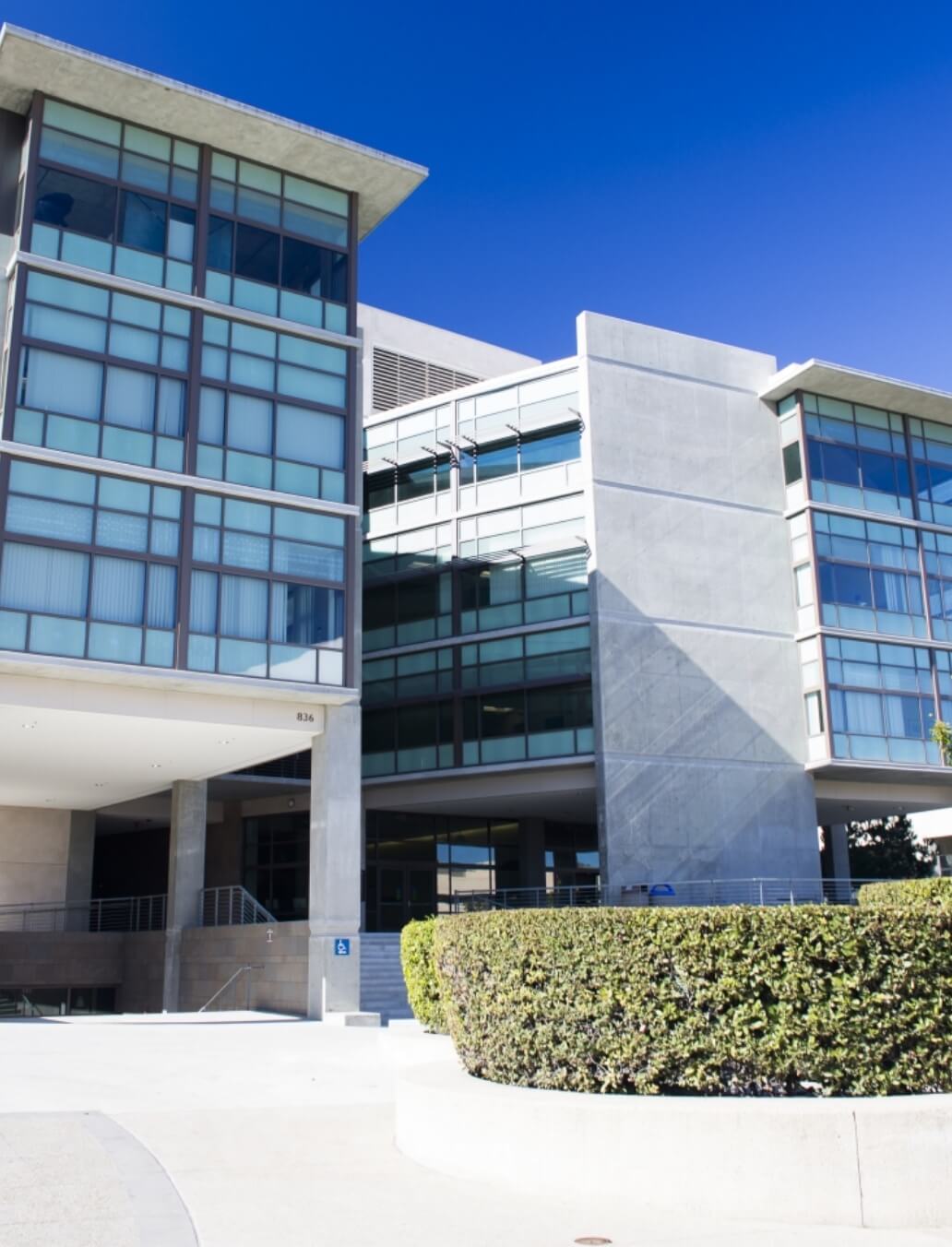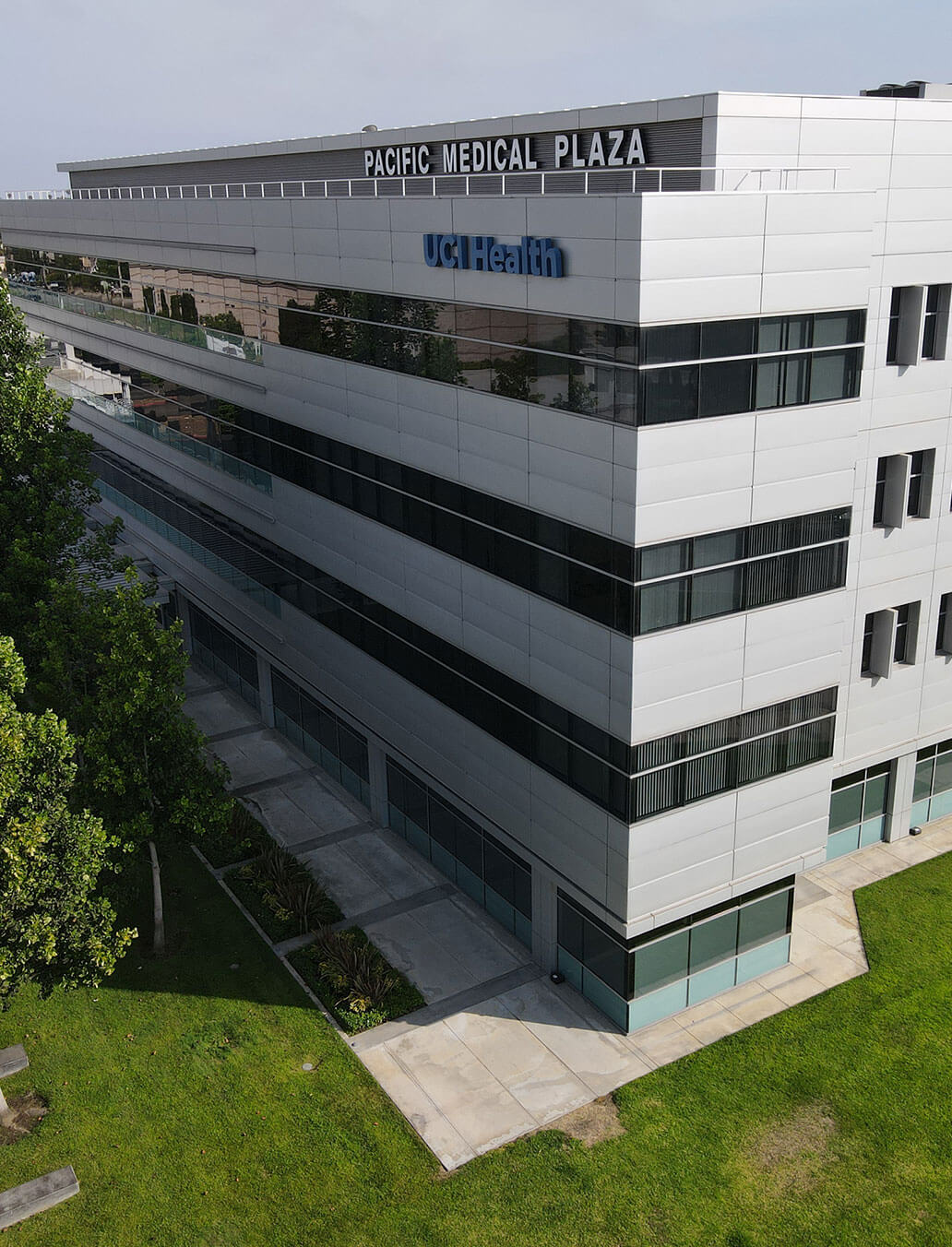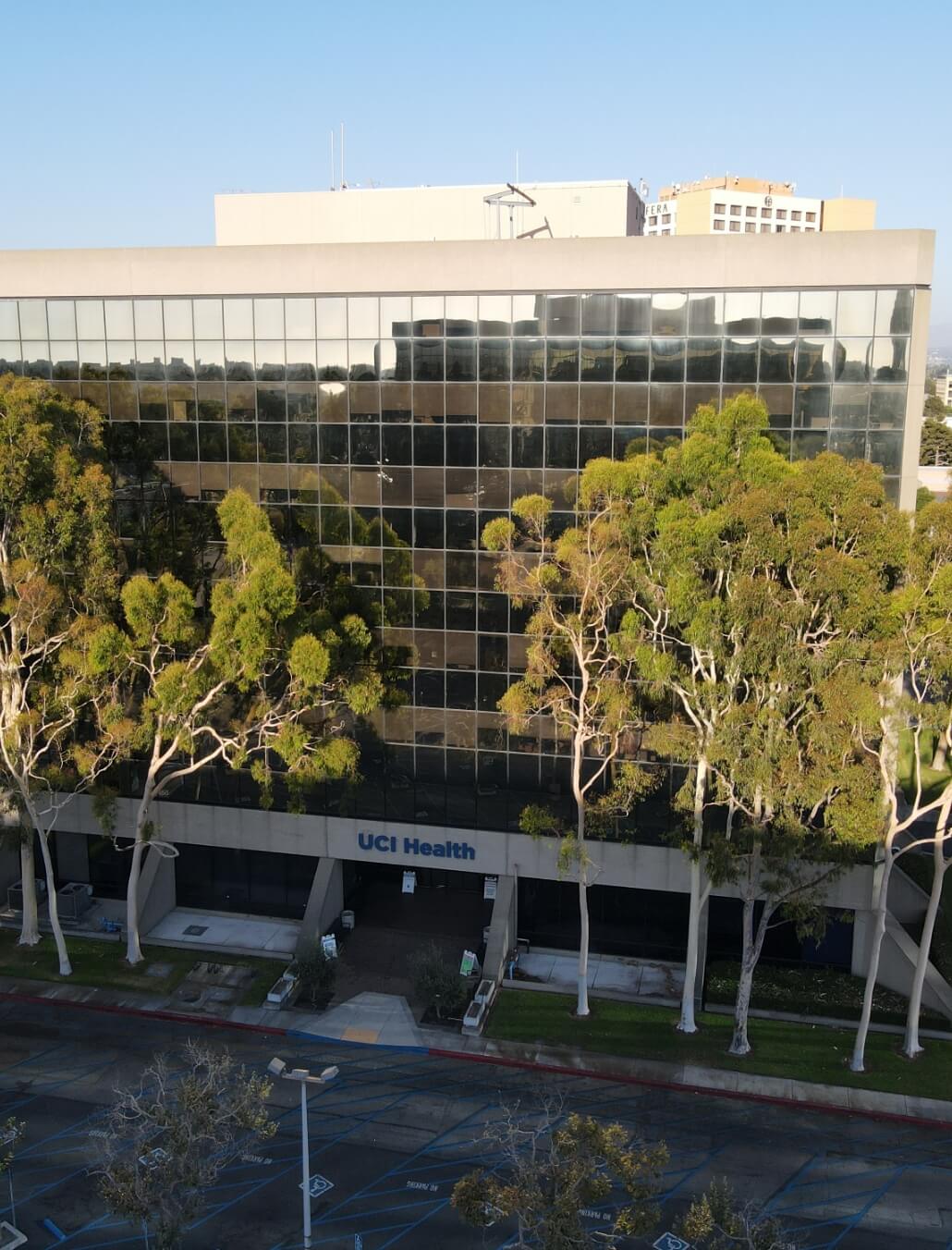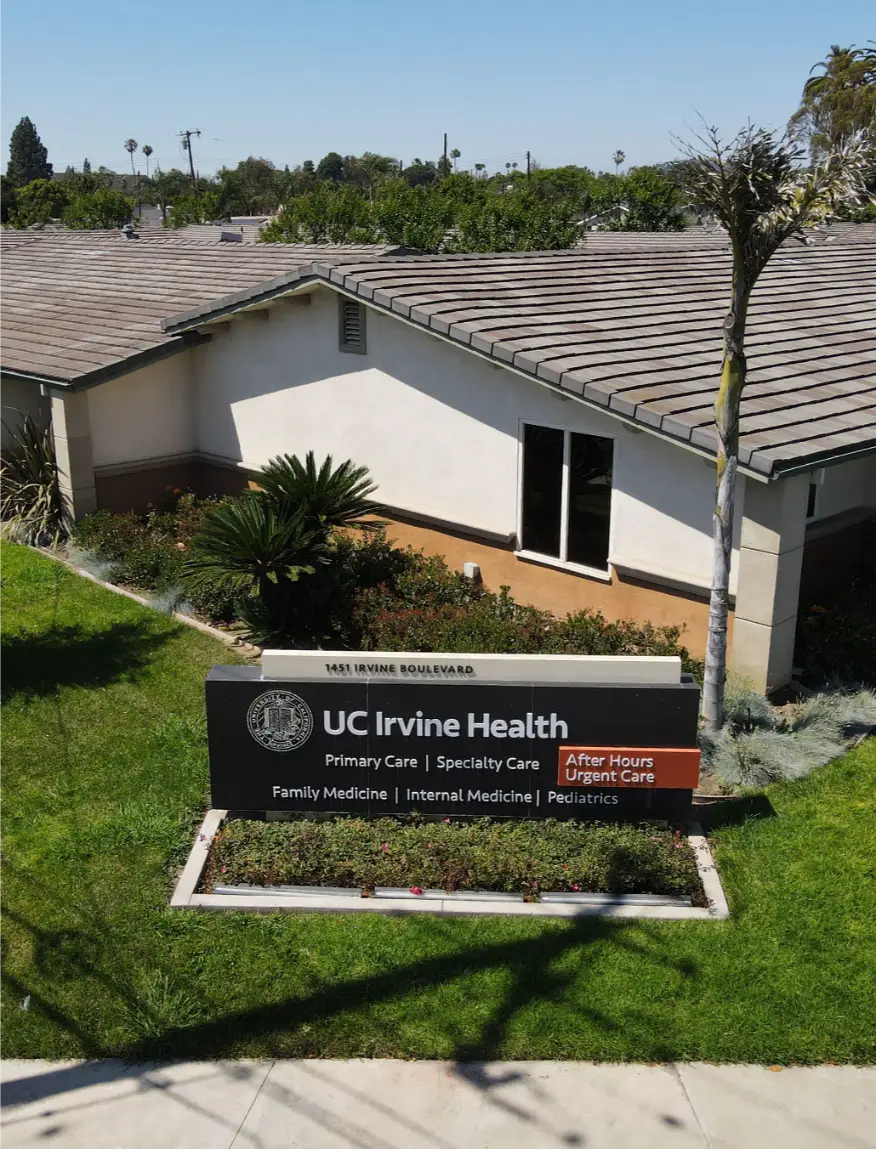Male breast reduction corrects a common problem in men: excess breast development, or gynecomastia. It is one of the most sought-after cosmetic surgical procedures for men. The surgery can help a man look and feel more masculine. In our warm Southern California climate, male breast reduction can free you to take your shirt off at the beach or pool with pride in your body, rather than embarrassment.
To learn more about our practice and how our skilled plastic surgeons can address male cosmetic concerns, contact UCI Plastic Surgery to schedule a consultation. We have three Orange County locations: in Orange, Costa Mesa, and Tustin, CA.
What Is Gynecomastia?
Gynecomastia, the term for breast development in men, is very common. Estimates suggest that close to half of men experience the problem at some point in their lives. It often begins in puberty or before, and gets worse with age. Weight gain, hormones, genetics, and specific medications can all be contributing factors.
It may be possible to correct mild cases of gynecomastia by losing weight and toning your chest muscles. Sometimes, you can also resolve medication-related cases by working with your doctor to find alternative treatment options. In other cases, diet- and exercise-resistant pockets of fat in male breasts may need liposuction to restore a masculine profile. When enlarged breasts result from excessive glandular tissue, only surgery will correct the problem.
What Is Male Breast Reduction?
Male breast reduction is cosmetic surgery to reduce the size of enlarged male breasts. The procedure creates flatter, firmer, and more masculine chest contours. In some cases, liposuction alone is sufficient if the enlarged breasts are due to excess fat. Or, a combination of liposuction and surgical excision can remove unwanted glandular tissue. In some cases, where the skin on the breasts has stretched and sagged, your surgeon may remove excess skin and reduce or reposition the areolas.
Why Might I Consider Male Breast Reduction?
Male breast reduction may be a solution for you if you have gynecomastia and struggle with one or more of the following issues as a result.
- You find yourself embarrassed by situations where you remove your shirt in public — at the beach or a pool, for example.
- You avoid activities such as exercise at the gym because of your chest appearance.
- You want to improve your body proportions.
- You would like to improve your self-confidence and self-esteem.
If you have gynecomastia, you should start by consulting your doctor to understand what causes the condition. If it relates to any prescriptions you are taking, for example, changing medications may help. Drug use, hormone problems, and lifestyle factors can also be causes. If you can’t correct the problem by identifying and treating the cause, and your efforts to reduce breast size with diet and exercise have not worked, male breast reduction may be the answer.
The best candidates for male breast reduction are in good health, at a stable body weight, and have realistic expectations for the procedure.
Our surgeons usually perform male breast reduction on adults, but in select cases, this surgery may be appropriate for teens suffering from severe gynecomastia.
The Male Breast Reduction Surgery Process
Your male breast reduction surgery will take place while you’re under anesthesia — either intravenous sedation or general anesthesia. Depending on your condition’s severity and nature, your surgeon will reduce your breasts’ size with liposuction, surgical excision, or a combination of both procedures.
Liposuction
Surgeons choose liposuction for male breast reduction when excess fat, rather than glandular tissue, is the main factor in breast enlargement. In performing liposuction, the doctor starts by making small incisions near the breast or below the areola, then inserting a small tube called a cannula. The surgeon carefully maneuvers the cannula to break up areas of fat and then suctions the fatty tissue out of your body through the tube. Because the liposuction incisions are so small, the procedure leaves only minimal scars.
Surgical Excision
Your surgeon will use surgical excision for male breast reduction when excess glandular tissue is a contributing factor in breast enlargement or when the breasts have enlarged to a degree that excess skin needs to be removed. In surgical excision, the doctor makes incisions around the areolas’ edges or along the natural creases under the breasts. The surgeon removes the excess tissue from within the breast and, if needed, excess skin from the surface. In some cases, they may reduce the areolas’ size and reposition the nipples.
Depending on the desired corrections, your surgeon may use liposuction in combination with surgical excision.
You’ll be able to go home after the surgery, once the anesthesia has worn off. You should arrange ahead of time to have someone drive you and, if possible, to stay with you for the first few hours of your recovery at home.
What Can I Expect in Recovery?
Your surgical team may supply you with a compression garment or bandage to wear during recovery to minimize post-operative swelling and support your new chest contours. You can expect some swelling and discomfort for the first couple of days after your procedure. Most patients return to work or school within a few days after liposuction or about a week after surgical excision.
You’ll receive detailed instructions on how to care for the incisions (and drains, if applicable), when to come back for follow-up visits, and when to resume different types of activity. Those instructions typically suggest resuming light exercise after about two weeks and slowly working up to your normal levels of activity over the following several weeks.

FAQ About Male Breast Reduction
We’ve listed some of the most common questions asked about gynecomastia surgery. For answers to any question not listed here, please contact one of our Orange County plastic surgeons.
What does male breast reduction do?
Male breast reduction surgery reduces enlarged male breasts, alleviates puffiness in the chest, and protrusion in the nipples. The surgeon removes excess glandular tissue from behind the nipples, using techniques in liposuction and excision (removal of tissue with a scalpel). General anesthesia or local anesthesia with sedation can be used for this 1-3 hour procedure.
When will I see results from the procedure?
You’ll see a reduction in breast size immediately after your procedure, but this will be offset to a degree by post-operative swelling. You’ll likely experience that residual swelling for a few weeks. As that gradually disappears, your chest will begin to look better and better. Results are usually visible after three to six months.
How long do male breast reduction results last?
The improvements made with male breast reduction are permanent in most cases. If you maintain a stable weight, your gynecomastia should not return. The exception to that outlook is in cases where enlarged breasts resulted from the use of specific medications or anabolic steroids. If that is your situation, continued use of those drugs could cause your breasts to grow larger again.
Does male breast reduction leave scars?
The scars from liposuction are tiny and barely noticeable, and surgeons place incisions in areas where they’ll heal as discreetly as possible. The scars from surgical excision are longer but are also strategically placed to minimize visibility. Scars will be most visible for the first few months after the procedure, then will gradually fade to match your skin color after about a year.
What are the risks of male breast reduction?
Like all surgical procedures, male breast reduction has risks that patients should know about and understand. Possible complications include, but are not limited to noticeable scars, pigmentation changes, asymmetry, infection, and bleeding. You can review all dangers during your consultation with one of our plastic surgeons.
Where are incisions located for male breast reduction?
Incisions for male breast reduction are usually well concealed. They are placed in the pigmented areas around each areola or in each armpit.
How long is recovery after male breast reduction?
After surgery, you can expect to feel upper body soreness and tenderness for 1-2 weeks. Most patients are able to resume their routine after a few days to a week. Light exercise can usually be resumed after about two weeks. Do not perform strenuous chest exercises for at least four weeks, depending on your doctor’s post-operative instructions. An elastic compression garment on the chest may be necessary for several weeks.
Start Your Journey Today!
UCI Plastic Surgery is a leader in the field of cosmetic surgery. Each of our specialists is highly knowledgeable, trained, and committed to bringing our patients the latest advancements in the field. Learn how our experts can help you obtain industry-leading results by scheduling a consultation today.
Schedule A Consultation




